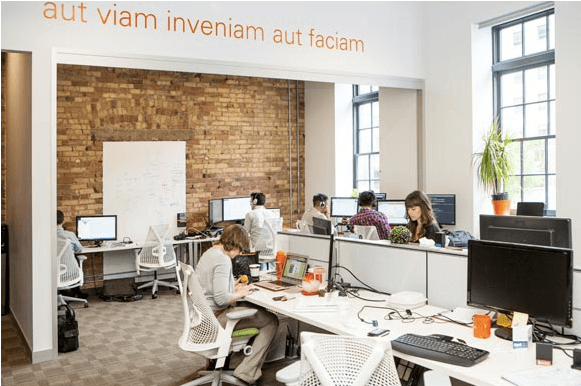A smarter storefront: How a new crop of digital platforms are innovating the retail floor

Note: This post originally appeared in Yonge Street Media. It has been re-posted here with permission.
In our digitized, documented lives, it’s become increasingly challenging to distinguish between our digital footprints and “IRL.” The same can be said for the commercial landscape, where the retail floor can often be replicated—sort of—online.
For a growing legion of savvy Toronto entrepreneurs under the wing of MaRS Discovery District, the future of retail means embracing the overlap and leveraging big data to ensure that both brands and buyers are better informed. The result is a complete integration of digital and physical spaces where retailers are better equipped to move product, and consumers feel empowered to make better choices.
“I’m excited when I walk into a store that has digital screens,” says Janice Diner, partner and CEO of HORIZN, a mobile platform that provides sales representatives with real-time information from a product’s corporate office, which can then be shown to customers on the retail floor. “The thing that totally intrigues me is how we merge digital and physical. Which is why the retail world is so interesting: because it is physical, and it is digital.”
HORIZN’s aim is simple: to arm the retailer to be better informed than the customer about the product they’re selling. It sounds straightforward enough, but Diner points out that this is an ingredient that can be easy to neglect in the current retail landscape, where the customer is often already equipped with his or her own information about a product, picked up online. Instead of complacency on the part of the retailer, this offers an opportunity to be even smarter. It’s win-win for both customer and retailer alike—not to mention, for the brands themselves.
Despite our growing predilection for online shopping, in-person retail environments still outperform eCommerce. Online businesses are catching on. Stores that began as web-only storefronts, like eyewear retailer Warby Parker in the U.S. and ClearlyContacts here in Canada, are beginning to set up brick-and-mortar shops of their very own, bringing in customer-facing digital applications to augment the experience. The future of retail involves a revisioning of the transactions that happen on the retail floor.
“Consumers like to shop,” says Diner. “But you need staff understanding product.”
Retailers have picked up on customers’ desire to have an in-store experience that’s bolstered by staff on the floor that are genuine product experts.. In its two years of operation, the HORIZN mobile platform has been adopted by 10 countries, and operates in 15 different languages.
On the newer end of the startup spectrum is Hubba, a B2B social network that connects marketing data–things like product videos and lookbooks—with the product’s sellers. Though the company has existed for a couple of years, the platform in its current “freemium” iteration went live in July. Marketing Director Emma Nemtin describes it as akin to Facebook, but for buyers and sellers.
“Our end goal is to get consumers to access this information, but for now we’re trying to solve this problem between brands and retailers,” says Nemtin.

That problem, according to Nemtin, is that major retailers are trying to reach more and more people without necessarily having the proper structures in place to send information to retailers that can then be easily and attractively presented to customers in-store.. She thinks Hubba’s well-designed and easy-to-use mobile platform answers that conundrum.

Product information isn’t the only missing piece of the retail puzzle. Gaining customer insight around demands and trends is also essential for retailers and brands alike. That’s where SoapBox comes in.
SoapBox, a four-year-old software platform launched from Ryerson’s Digital Media Zone, works as a suggestion box where customers can submit ideas on how they would improve a particular company. On the back end, the suggestions gets screened and managed so that the best ones can get executed. What makes it different from a conventional suggestion box is transparency: the community is able to vote on each other’s ideas, and receives incremental updates on each idea as it moves closer to completion. It gives the consumer a direct input on their shopping experience, allowing them to help mold a brand into something that better meets their needs.
Indigo is a Soapbox success story. The massive book and lifestyle retailer reprinted its complimentary bookmarks with extra blank space for staff to write recommendations upon customer request. It was an easy way of personalizing the shopper’s experience with the added benefit of helping to move product.
“It’s not a ten-year project,” says Warren Tanner, CMO and Co-Founder of SoapBox. “They turned it around in a matter of weeks.”
Tanner thinks that this kind of tech-facilitated adaptability will continue being key to retail success, moving into the future.
“A lot of the focus is on trying to stay on top of where things are going and how to serve customers better based on their perceptions, their habits, and all these other factors that continue to keep changing the game,” he says.
As the old adage goes, the customer is always right; the trick, in a changing landscape, is to have the right tools to better serve them.
Story by Kelli Korducki. Photos by Tanja Tiziana.